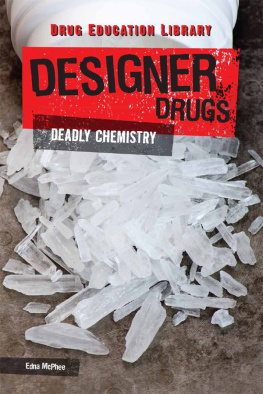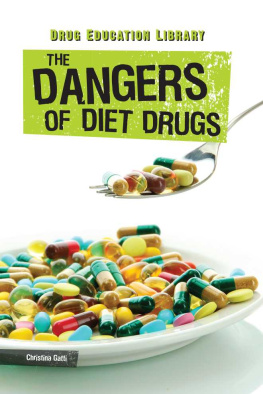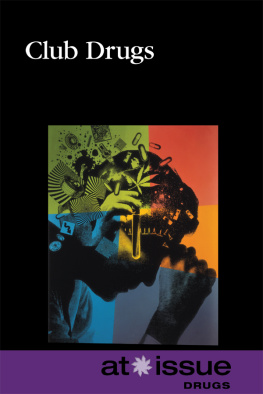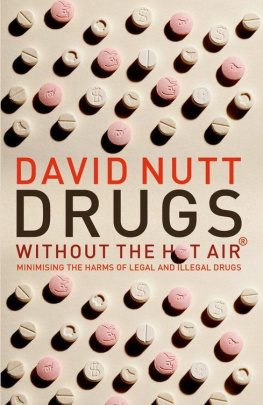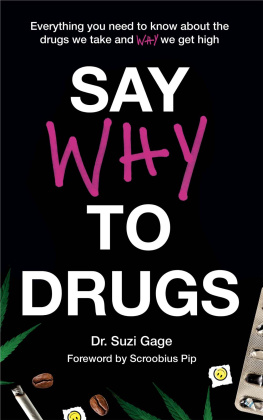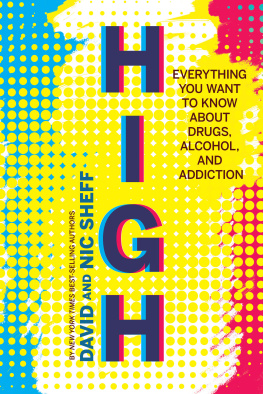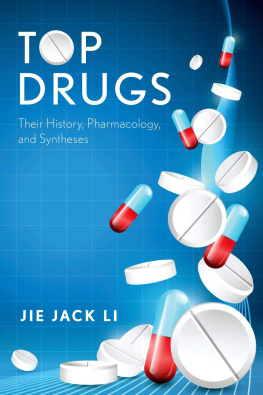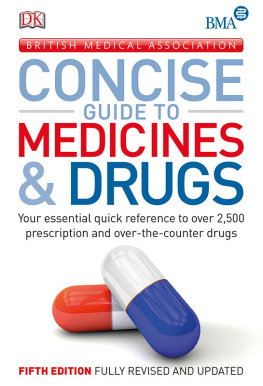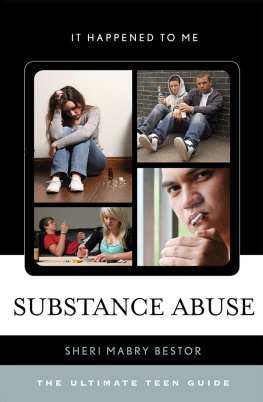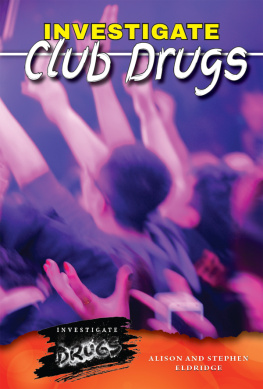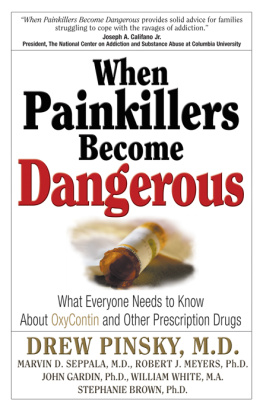Published in 2017 by
Lucent Press, an Imprint of Greenhaven Publishing, LLC
353 3rd Avenue Suite 255
New York, NY 10010
Copyright 2017 Greenhaven Press, a part of Gale, Cengage Learning
Gale and Greenhaven Press are registered trademarks used herein under license.
All new materials copyright 2017 Lucent Press, an Imprint of Greenhaven Publishing, LLC.
All rights reserved. No part of this book may be reproduced in any form without permission in writing from the publisher, except by a reviewer.
Designer: Seth Hughes
Editor: Jennifer Lombardo
Library of Congress Cataloging-in-Publication Data
Names: McPhee, Edna, author.
Title: Designer drugs : deadly chemistry / Edna McPhee.
Description: New York : Lucent Press, [2017] | Series: Drug education library | Includes bibliographical references and index.
Identifiers: LCCN 2016052500 (print) | LCCN 2016052896 (ebook) | ISBN 9781534560079 (library bound) | ISBN 9781534560086 (E-book)
Subjects: LCSH: Designer drugs. | Drug abuse.
Classification: LCC RM316 .M37 2017 (print) | LCC RM316 (ebook) | DDC 615.1/9--dc23 LC record available at https://lccn.loc.gov/2016052500
Printed in the United States of America
CPSIA compliance information: Batch #CW17KL: For further information contact Greenhaven Publishing LLC, New York, New York at 1-844-317-7404.
Please visit our website, www.greenhavenpublishing.com . For a free color catalog of all our high-quality books, call toll free 1-844-317-7404 or fax 1-844-317-7405.
Foreword
T he development of drugs and drug use in America is a cultural paradox. On the one hand, strong, potentially dangerous drugs provide people with relief from numerous physical and psychological ailments. Sedatives such as Valium counter the effects of anxiety; steroids treat severe burns, anemia, and some forms of cancer; and morphine provides quick pain relief. On the other hand, many drugs (sedatives, steroids, and morphine among them) are consistently misused or abused. Millions of Americans struggle each year with drug addictions that overpower their ability to think and act rationally. Researchers often link drug abuse to criminal activity, traffic accidents, domestic violence, and suicide.
These harmful effects seem obvious today. Newspaper articles, medical journals, and scientific studies have highlighted the many problems drug use and abuse can cause. Yet, there was a time when many of the drugs now known to be harmful were actually believed to be beneficial. Cocaine, for example, was once hailed as a great cure, used to treat everything from nausea and weakness to colds and asthma. Developed in Europe during the 1880s, cocaine spread quickly to the United States, where manufacturers made it the primary ingredient in such everyday substances as cough medicines, lozenges, and tonics. Likewise, heroin, an opium derivative, became a popular painkiller during the late 19th century. Doctors and patients flocked to American drugstores to buy heroin, which was described as the optimal cure for even the worst coughs and chest pains.
As more people began using these drugs, though, doctors, legislators, and the public at large began to realize that they were more damaging than beneficial. After years of using heroin as a painkiller, for example, patients began asking their doctors for larger and stronger doses. Cocaine users reported dangerous side effects, including hallucinations and wild mood shifts. As a result, the U.S. government initiated more stringent regulation of many powerful and addictive drugs, and in some cases outlawed them entirely.
A drugs legal status is not always indicative of how dangerous it is, however. Some drugs known to have harmful effects can be purchased legally in the United States and elsewhere. Nicotine, a key ingredient in cigarettes, is known to be highly addictive. In an effort to meet their bodys demand for nicotine, smokers expose themselves to lung cancer, emphysema, and other life-threatening conditions. Despite these risks, nicotine is legal almost everywhere.
Other drugs that cannot be purchased or sold legally are the subject of much debate regarding their effects on physical and mental health. Marijuana, sometimes described as a gateway drug that leads users to other drugs, cannot legally be used, grown, or sold in half of the United States. However, some research suggests that marijuana is neither addictive nor a gateway drug and that it might actually have a host of health benefits, which has led to its legalization in many states for medical use only. A handful of states also permit it to be used recreationally, but the debate on this matter still rages.
The Drug Education Library examines the paradox of drug use in America by focusing on some of the most commonly used and abused drugs or categories of drugs available today. By objectively discussing the many types of drugs, their intended purposes, their effects (both planned and unplanned), and the controversies surrounding them, the books in this series provide readers with an understanding of the complex role drugs play in American society. Informative sidebars, annotated bibliographies, and lists of organizations to contact add to the text and provide young readers with many opportunities for further discussion and research.
Introduction
DRUGS BY DESIGN
A growing concern over the last two decades has been the emergence of a class of drugs known as synthetic (manmade) or designer drugs. There is some disagreement over which drugs fall into this category. The term is typically used to describe illegal, man-made chemicals created in a laboratory setting. They are created in the laboratory to produce the same effects as a natural drug, often to get around drug laws: Legislators would sometimes pass laws prohibiting a substance used in a designer drug only to see a marginally different version appear, using substances not covered in the original law.1 These new versions are called analogs. Laws have been passed to try to more strictly control the sale of designer drugs. Most recently, the Synthetic Drug Abuse Prevention Act of 2012 made many of the compounds used in the creation of designer drugs illegal. However, drug makers can get around the laws by labeling their product not for human consumption; this lets them claim that they did not expect someone to try to eat or smoke the product, and it is often difficult for law enforcement to prove otherwise. They are also sometimes able to make new versions of the drug that are different enough from the old version to be technically legal. Sometimes these drugs are much more dangerous than the ones they are trying to copy.
Other designer drugs are illegal outright, but since they are completely created in a lab, they are still synthetic substances. Designer drugs were initially known as club drugs because they were typically consumed at parties, nightclubs, and large dance events known as raves. In recent years, though, their use has spread beyond the rave scene, and several new, more dangerous drugs have been created.
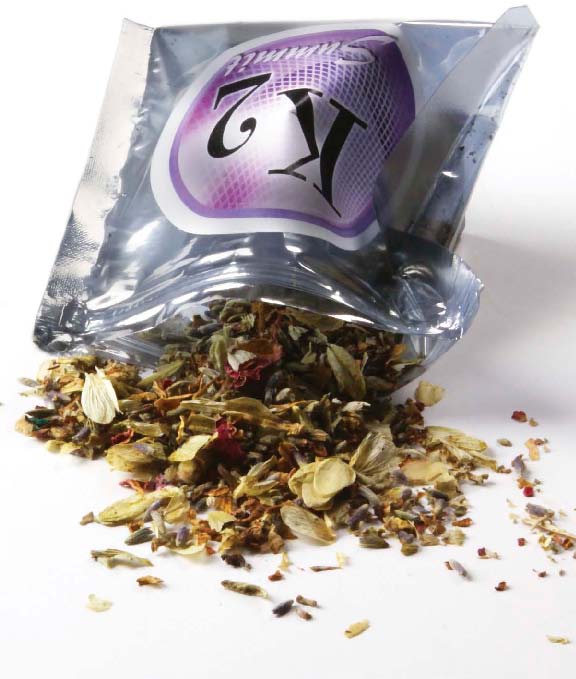
The Synthetic Drug Abuse Prevention Act of 2012 outlawed many of the compounds in synthetic cannabinoids, but new ones are being created all the time to get around that law.
Who Uses Designer Drugs?
Some of the most common designer drugs include 3,4-methylenedioxymethamphetamine (also known as MDMA or, most commonly, ecstasy); gamma-hydroxybutyrate (GHB), a drug that is often used in date rape assaults; lysergic acid diethylamide (LSD, or acid); synthetic cannabinoids, known as Spice, K2, or legal weed; ketamine, a hallucinogenic sedative commonly used by veterinarians; and methamphetamine, commonly called meth.

